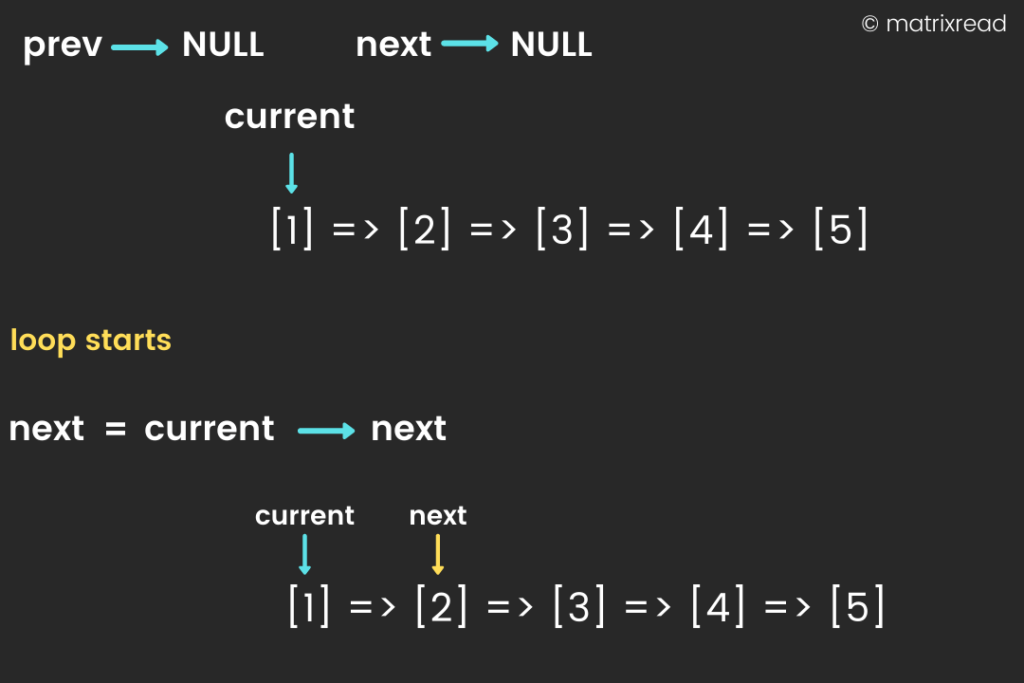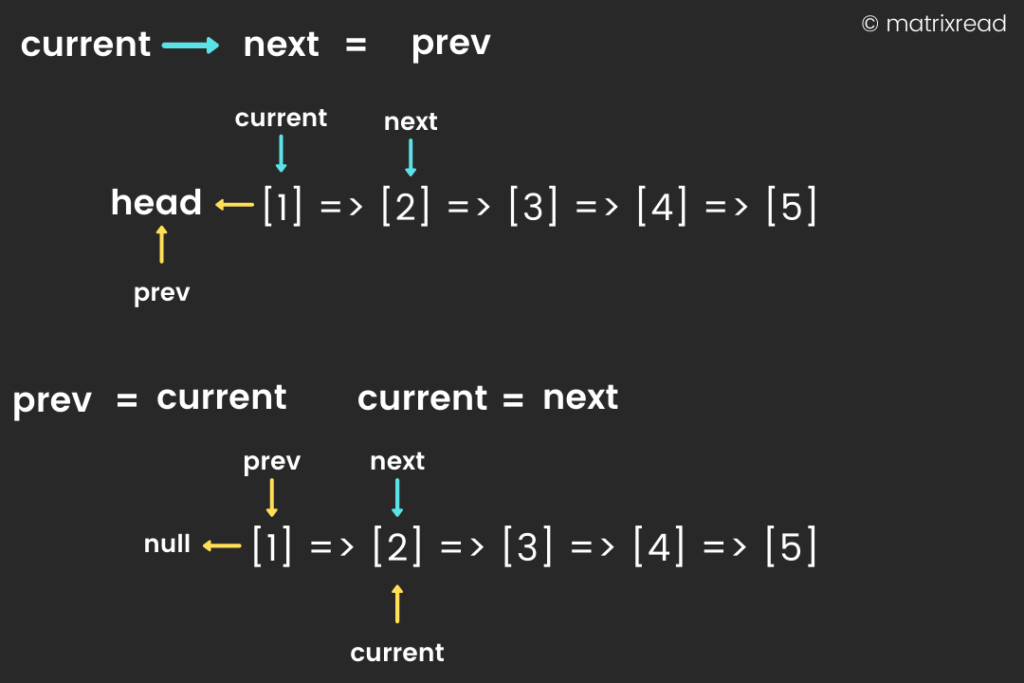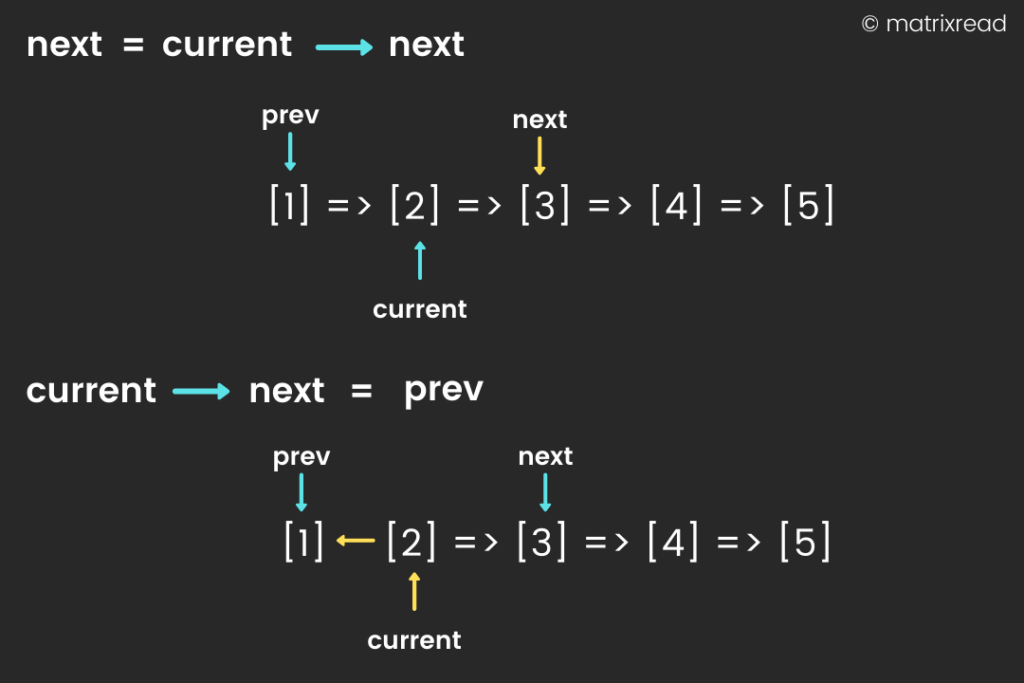Yes, we are doing it today. The all-time famous interview question, Do you know how to reverse a Linked List? Well turns out, it isn’t that difficult and it’s all about logic and pointers, okay let’s get started.
Alright, I already wrote a post explaining the basic operations and structure of a Linked List. If you want to revise, have a look at – Linked List
Example
This a normal Linked List, where each element in the list points to the next item.
[1] => [2] => [3] => [4] => [5]So, in order to reverse a linked list, we need to do something like this,
[1] <= [2] <= [3] <= [4] <= [5]Solution Approach
Before we move on, let’s see the constraints/conditions
- Each item/node can point to only one node at a time
- The [HEAD] pointer usually points to the first node
- Space should be constant
- We will do this in one iteration
Pseudocode
- Start iterating through the linked list
- We use three pointers PREV, CURRENT, and NEXT
- CURRENT and NEXT keep iterating and
- PREV stays at the previous node and
- We point the current Node’s next to PREV
[prev] <= [current] [next]- After this PREV = CURRENT
- Now, we make CURRENT = NEXT, so that we move to the next node
- And again NEXT => CURRENT => NEXT
- Now again point CURRENT node’s next to prev
I know this can be overwhelming and I made an info-graphic to make things simple you can follow this or code below to understand it easily.



Code
Reverse a Linked List C++
#include <iostream>
using namespace std;
class Node
{
public:
int data;
Node *next;
};
class LinkedList
{
private:
Node *first;
public:
LinkedList() { first = NULL; }
LinkedList(int A[], int n);
//destructor
~LinkedList();
void Display();
void Reverse();
};
void LinkedList::Reverse()
{
Node *current=first;
Node *prev=NULL, *next=NULL;
while (current!=NULL)
{
next=current->next;
current->next=prev;
prev=current;
current=next;
}
first=prev;
}
LinkedList::LinkedList(int A[], int n)
{
Node *last, *t;
int i = 0;
first = new Node;
first->data = A[0];
first->next = NULL;
last = first;
for (i = 1; i < n; i++)
{
t = new Node;
t->data = A[i];
t->next = NULL;
last->next = t;
last = t;
}
}
LinkedList::~LinkedList()
{
Node *p = first;
while (first)
{
first = first->next;
delete p;
p = first;
}
}
void LinkedList::Display()
{
Node *p = first;
while (p)
{
cout << p->data <<" " ;
p = p->next;
}
cout << endl;
}
int main()
{
// reversing a linked list
int A[] = {11, 22, 33, 44, 55};
LinkedList l(A, 5);
l.Display();
l.Reverse();
l.Display();
l.~LinkedList();
return 0;
}Conclusion
The best way to understand this would be to perform a dry run using a pen and paper, trust me once you know what’s happening at each step you’ll grasp the logic easily. This post is part of my #30DaysChallenge to write a blog post every day on what I learn. I hope you found this helpful ~ Thank You, Abhiram Reddy.
